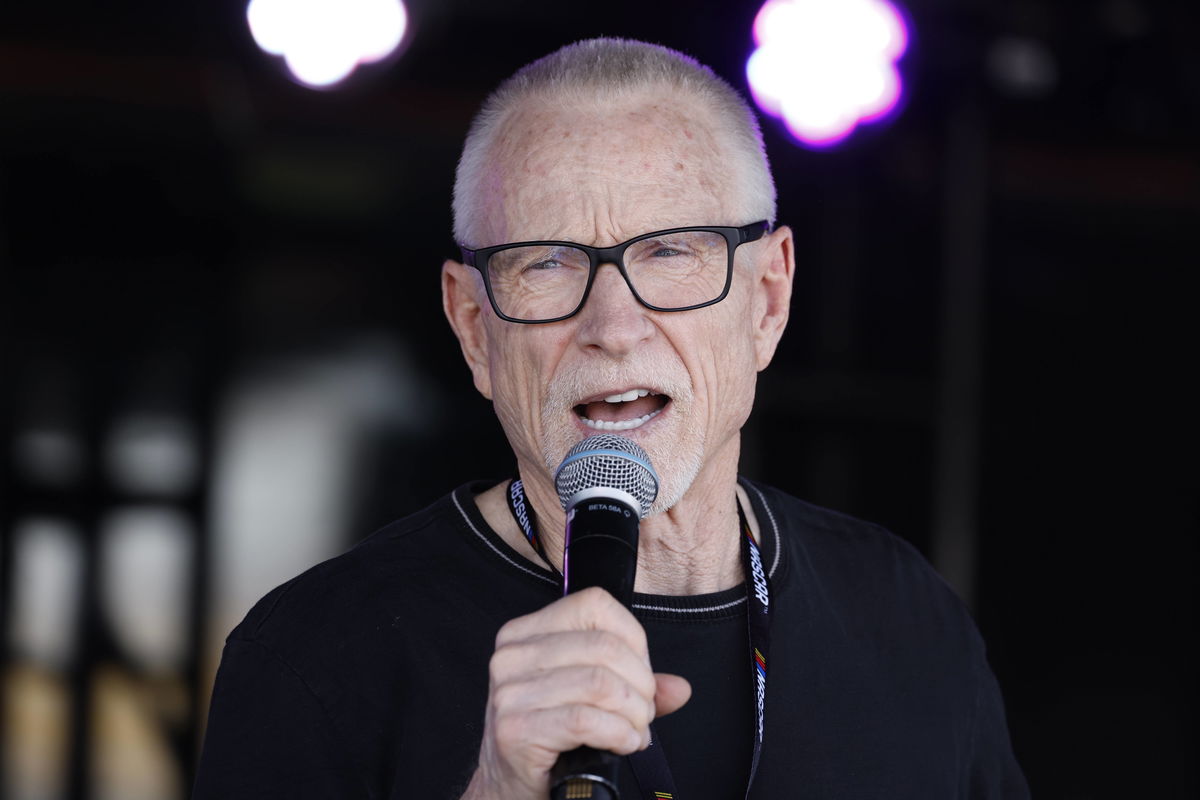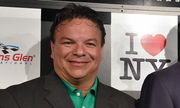
Imago
LAS VEGAS, NV – OCTOBER 15: Former NASCAR, Motorsport, USA driver Mark Martin speaks to fans in the Neon Garage before for the NASCAR Cup Series Playoff South Point 400 on October 15, 2022, at Las Vegas Motor Speedway in Las Vegas, NV. Photo by Jeff Speer/LVMS/Icon Sportswire AUTO: OCT 15 NASCAR Cup Series Playoff South Point 400 Icon221015013

Imago
LAS VEGAS, NV – OCTOBER 15: Former NASCAR, Motorsport, USA driver Mark Martin speaks to fans in the Neon Garage before for the NASCAR Cup Series Playoff South Point 400 on October 15, 2022, at Las Vegas Motor Speedway in Las Vegas, NV. Photo by Jeff Speer/LVMS/Icon Sportswire AUTO: OCT 15 NASCAR Cup Series Playoff South Point 400 Icon221015013
Grassroots short-track racing remains the proving ground for rising stars, many of whom, years later, make their way to NASCAR’s top tier. Drivers such as Josh Berry, Christopher Bell, Kyle Larson, Ryan Blaney, and William Byron all built their reputations in Late Model racing at local short tracks before cracking the Cup Series.
Watch What’s Trending Now!
Even established NASCAR Cup drivers frequently return to these tracks during the off-season between dates, testing cars, connecting with fans, and staying sharp. Now, NASCAR legend Mark Martin is making a bold declaration that short track racing isn’t fading; it is roaring back. After criss-crossing the country, Martin insisted that the grassroots scene is alive, thriving, and once again capturing hearts and crowds.
ADVERTISEMENT
Mark Martin reflects on short tracks making a comeback into the NASCAR spotlight
Across the U.S., short tracks are enjoying a resurgence. Historic venues like North Wilkesboro Speedway have returned to host high-profile events such as the 2023 NASCAR All-Star race, which drew 35,000 fans and helped validate short-track demand. Meanwhile, drivers, including Dale Junior, who have raced at Florence Motor Speedway and other CARS Tour events this year, have reaffirmed that they are committed to this top tier form of racing and helped shine a spotlight on local venues.
Mark Martin’s return to Wisconsin coincides with a broader short track renaissance in the Badger State. Tracks like Dells Raceway Park have been reinvigorated by a new partnership for NASCAR, joining the NASCAR Advance Auto Parts Weekly Series in 2025 to promote sustainable regional competition and attract local talent. Venues such as La Crosse Fairgrounds Speedway and Madison International Speedway continue holding packed weekly late model car races and host marquee events like the Joe Shear Classic and Oktoberfest Race Weekend as part of the ASA Midwest Tour.
Speaking about the scope of Grassroots racing, Martin didn’t hold back on Kevin Harvick’s Happy Hour. He said, “Yeah, I think it’s short track racing’s healthy grassroots racing. I feel like for as being a fan, I feel like that the dirt bunch really has a great formula. Maybe a little bit better, a little bit more sustainable formula than the pavement guys do, but you know, pavement late models, what you guys are doing, you and Keelan are doing, you know, are the foundation of my career as well. And they’re really where my heart’s at.”
ADVERTISEMENT
Kevin Harvick and his 13-year-old son, Keelan, are lighting up the grassroots scene in 2025 with their father-son “Harvick Cup” showdown with top pro late model events. The younger Harvick leads the series 3-0, scoring wins at Kern Raceway, Evergreen, and Hickory, where he claimed his first CARS Tour Pro Late Model victory by outdueling his dad. Kevin, now a CARS Tour co-owner, still races hard but says sharing the track with Keelan is pretty cool, as the duo blends generational rivalry with the shared love for short-track racing.
Moreover, Kevin Harvick couldn’t help but be joyous about the increasing hardcore fans of grassroots racing. Reflecting on his and his son’s race at Colorado, he noted that there were 11,300 people there to watch. That experience reflects a broader revival of grassroots enthusiasm at Colorado National Speedway in Dacono. Further, the debut of the CARS Tour West on July 26 drew capacity crowds and top car counts, reaffirming the state’s short track appeal. The track, the mainstream, and the NASCAR Advance Auto Parts Weekly Series have hosted the ARCA Menards Series West and routinely deliver memorable summer nights filled with affordable family entertainment and passionate local fans.
ADVERTISEMENT
Moreover, Martin seals the fate of grassroots racing supremacy by saying, “And it’s alive and well. Um, you can go to Wisconsin and see racing all nights of the week. It’s, it’s still amazing up there. Unfortunately, we have lost some venues. Uh, but that’s more because the cities have grown up around the racetracks, and the property becomes more valuable than, you know, the racetracks. So, you’re losing some racetracks here and there, and that’s, you know, that’s a shame, but short track racing is alive and well.”
In fact, NASCAR road course master Shane van Gisbergen overcame his struggles of performing on oval tracks by dominating at the grassroots level and winning his first oval race ever at Charlotte Motor Speedway. And Bubba Wallace wasn’t one to shy away from showering the Kiwi with praise. This makes one thing clear: Grassroots-level racing is the best proving ground. And now, as Mark Martin has expressed his passion toward it, he also shared a sneak peek of how he got into that level of racing.
Top Stories
Greg Biffle’s $4M Prized Possession Goes Up for Sale After Tragic Crash, Leaving NASCAR Fans Heartbroken

NASCAR World Mourns as Former Watkins Glen President Michael Printup Passes Away at 60

Fox Broadcaster Pens Heartfelt Message as Veteran Announcer Quits NASCAR

Denny Hamlin Offers First Words Since Losing Beloved Father in Anniversary Fire

3x Indy 500 Champion Driver Eyes to Live 19-YO Dream With Surprise NASCAR Return

ADVERTISEMENT
Mark Martin opens up about his uphill battle at the grassroots level of racing
Mark Martin started his NASCAR Cup Series journey at the grassroots level. He vividly recalled how his career began, and it wasn’t through some master plan; it was a fluke that changed everything. He went on to say, “Well, it really kind of all built up by accidentally winning the ASA Rookie of the Year in my senior high school year… So, we won the Rookie of the Year, and lo and behold, Ed Hal gave me a free chassis for the next year.” That unexpected honor in 1977 propelled Martin into the American Speed Association spotlight. He earned Rookie of the Year that season and followed it up by capturing three straight ASA championships from 1978 through 1980.
With the free chassis in hand, Martin transformed momentum into action. He built a stronger car in Batesville, Arkansas, setting his sights on the ASA title. By age 19, he had become one of the youngest champions in series history, winning at age 12 in modern terms and pushing aside seasoned veterans. His success drew major support from Firestone and parts manufacturers, allowing him to compete without major sponsorship; the engine costs remain a burden.
Martin’s early financial realities came into sharper focus when he mentioned, “We didn’t have a money sponsor. Pretty much the only thing we had was the engines, which were pretty expensive at the time… So, I parlayed that into moving to Wisconsin. I mean, I’m sorry moving to Indiana in ’79, and kind of getting out on my own, getting out from under my dad’s organization and everything.”
ADVERTISEMENT
That hard-learned truth turned into determination. In 1979, he relocated to Indiana, encouraged by Ray Dillon, who offered him access to a shop, housing, and logistic support, allowing Martin to break free from his father’s organization and build an independent operation. Settling in Indiana gave Martin the freedom and foundation he needed. He teamed with Ray Dillon to design and build the Dillon Mark 2 chassis in 1980, a car that quickly dominated short-track competition.
From that point on, Martin established himself not just as a top driver but as a short-track innovator whose early grit and engineering acumen laid the groundwork for a legendary racing career.
ADVERTISEMENT
ADVERTISEMENT
ADVERTISEMENT

